Notes for MASS Zoom Meeting on January 29, 2021
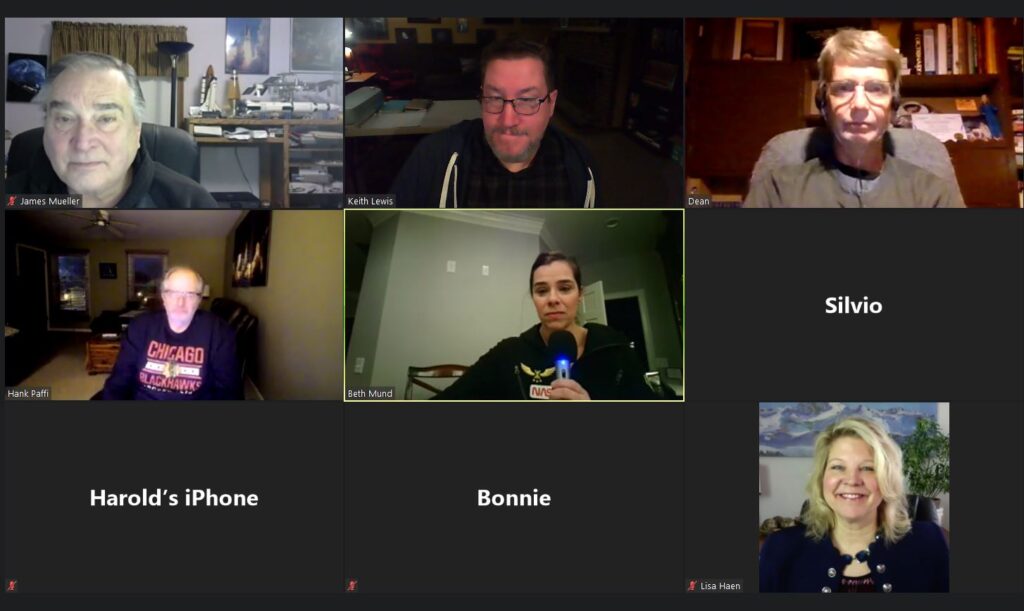
We had a record turnout for our 71st meeting and the 7th on Zoom. Keith, Dean, Beth, Chad, Silvio, Hank, Harry, Dennis, Beth’s mom, Bonnie, and Beth’s friend from Green Bay, WI, Lisa, and myself, set a record of 11 people on the call. We started a little later at 7:30 PM to accommodate Dean’s new working hours.

My background for the presentation was the post-Christmas snowman decorations that my wife Carol brings out each year. I needed the non-space image so that I can get a little more balance in my life. I wake up wondering if there is a launch today and who might be live-streaming a space or astronomy event on YouTube. In fact, I even watched the story-time event by astronaut Shannon Walker from the ISS titled “Willow the Water Bear” last Tuesday. I’m a sucker for anything that has information about tardigrades.
I announced that there is a presentation from Joe Dal Santo, astronomer at COD, titled “New View of Universe” about gravitational waves at 7:30-9PM on Saturday February 20. Call 630 942-2208 to register for the online event (class code – HUMNT-0001-201). It’s free.
It is also a sad time of year with all 3 NASA’s loss of life accidents occurring within 6 calendar days. NASA had its “Fallen Hero Remembrance” to commemorate the Apollo 1 fire which occurred on January 27, 1967 with the loss of Virgil Grissom, Edward White and Roger Chaffee, the Shuttle Challenger explosion on January 28, 1986 with the loss of Christa McAuliffe, Greg Jarvis, Judith Resnik, Dick Scobee, Ronald MacNair, Mike Smith and Ellison Onizuka and finally the Shuttle Columbia break-up on February 1, 2003 with the loss of Rick Husband, William McCool, David Brown, Kalpana Chawla, Mike Anderson, Laurel Clark and Ilan Ramon. We should never forget that traveling into space is a risky endeavor.
I started the meeting with a short summary of what is coming in 2021. The article from Forbes does a great job in listing the events. I only elaborated on a few of them. Worth noting is the February 18 landing of the Perseverance rover in Jezero Crater on Mars. This will be another “7 minutes of terror” landing just like the Curiosity rover did on August 6, 2012. Perseverance was built for $700 million less than Curiosity’s $2.8 billion price tag because so many spare parts were used. But Perseverance will be able to accomplish much more. The landing ellipse is only 7.7 x 6.6 km (4.8 x 4.1 mi). This is accomplished by a new autonomous navigation system that will use landmarks to time when to deploy the parachutes and also maneuver during the rocket landing phase. New experiments include: MOXIE which will use electricity to separate oxygen from the carbon dioxide Mars atmosphere, a helicopter called Ingenuity which we help in scouting a safe route for the rover and a Ramen spectrometer which will help characterize carbon containing minerals. Jezero Crater had a lake 3 1/2 billion years ago. Perseverance will drill into the rock of the lake bed, river delta and beaches to take core samples that will be retrieved and rocketed back to Earth by future missions. The instruments necessary to determine if there was life in those core samples 3-4 billion years ago only exists in labs back here on Earth. Landing should be at around 2:30 PM, Thursday, February 18. I’ll be watching with my “lucky” JPL peanuts. We won’t see the landing live but they will have a signal to indicate whether the landing was successful. Cameras should record the landing from several angles and a microphone might give us audio too. But we’ll have to wait a while to download that info back from Mars.
Perseverance is not the only mission arriving at Mars this February. The Chinese Tianwen-1 spacecraft should arrive in orbit on February 10. It will orbit Mars taking pictures for several months before it lands in April or May with its rover. The UAE also has an orbiter arriving in February to study the atmosphere.
Another big event for 2021, is the launch of the James Webb Space Telescope (JWST) on Halloween, October 31, 2021. The $8.7 billion telescope has been a long time coming. Hopefully its complex deployment occurring at a distance of a million miles from Earth will go smoothly.
Two Commercial Lunar Payload (CLPS) mission are scheduled to land on the moon. Astrobotic of Pittsburgh and its Peregrine lander will use the new Vulcan rocket from United Launch Alliance (ULA) and place 26 small payloads (10 for NASA) on Lacus Mortis, a lava plain in the northeast region of the moon, in October. Later Intuitive Machines of Houston will launch on a Falcon 9 rocket and land their Nova-C probe with 5 NASA payloads in Oceanus Procellarum at the site where Apollo 18 was to land. Both companies previously competed in the Lunar X Prize contest. Its good to see some of the technology developed in that contest actually fly to the moon.
On May 10, the Osiris-Rex spacecraft will head back to Earth with its sample of the asteroid Bennu. It is scheduled to land in the Utah dessert on September 24, 2023. Two and a half years is a long wait, but that pristine sample of a carbonaceous asteroid will be a treasure for scientists trying to understand the formation of the planets. NASA’s Lucy mission should launch on October 16. This mission will spend 12 years studying 6 of Jupiter’s Trojan asteroids. Trojan asteroids congregate in 2 of the Lagrange points of Jupiter. These “gravity well” Langrage points precede and trail Jupiter in its orbit by 60 degrees. Late in 2021, the Near Earth Asteroid Scout mission will launch a cubesat to asteroid 1991 VG. It will be the most distant mission ever attempted by a cubesat. Cubesats are built from 10 cm cubes typically with inexpensive off-the-shelf parts.
Lastly, the Vera Rubin Observatory in Chile is to see “first light” in 2021. This new telescope has a very wide field of view and an enormous camera that will be able to image the entire sky visible from Chile every few nights. This rapid imaging of the night sky will effectively give astronomers a movie of how celestial objects change with time. This telescope will also be the most impacted by the new constellations of Internet-from-space satellites. Let’s hope the two can exist without too much conflict.
Here is what NASA has highlighted for 2021.
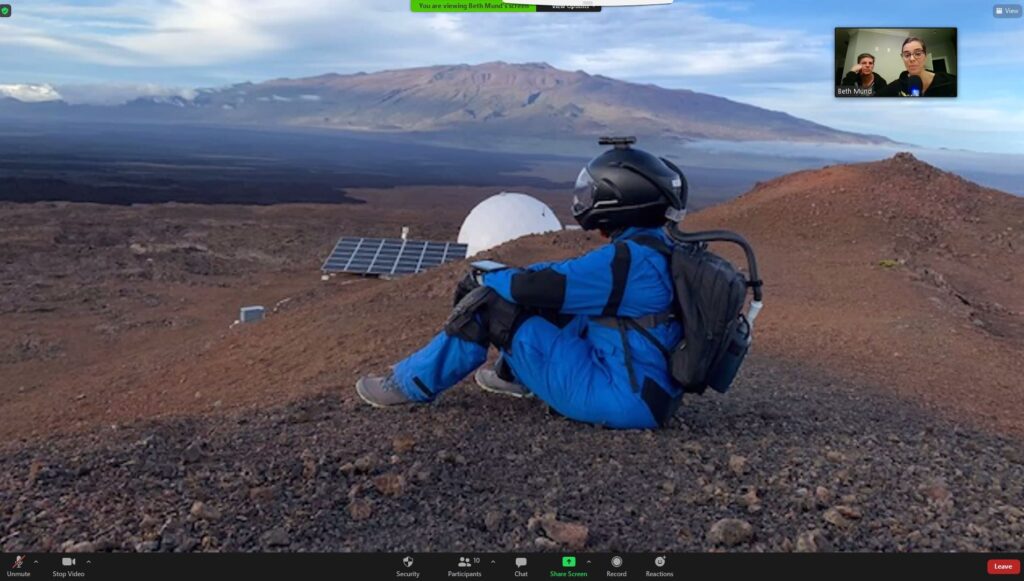
For our main topic, Beth shared her experience in a 2 week long Mars simulation on a volcano in Hawaii. She and 5 of her female crewmates were in the Sensoria M2 Simulation at the HI SEAS facility. To have to log all your food intake and all the stuff that comes out of you for 2 weeks, would make the hardiest camper shiver a bit. Food was extremely spartan, water was rationed, all communication with the outside world was delayed by 20 minutes, hardly the cruise I would sign up for. Beth said it gave her a new appreciation for the hardships a crew would experience traveling to Mars. It was a great presentation. You can get a first-hand account of Beth’s experience with her podcast, “Casual Space”. Episodes 103-106 deal with the simulation.
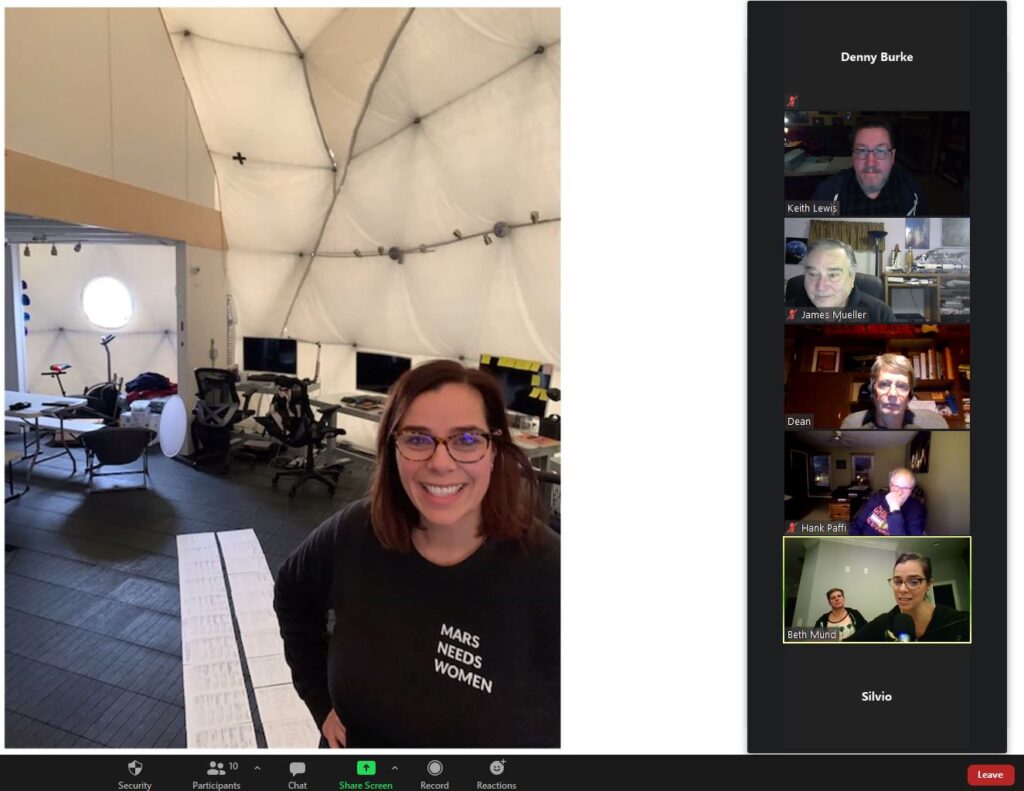
After Beth’s talk I shared the story about how the “mole” instrument on the Insight lander on Mars has stopped trying to dig into the soil. The mole has been trying to burrow since February 28, 2019. The Mars soil has not provided the necessary friction for the bullet shaped device to work. The robotic arm helped push the mole under the surface and then heaped a couple of cm of soil on top of it. As the gif animation on the above site shows, 500 hammer strokes only pushed some dirt out the top of the mole’s burrow hole . I announced the Dean has won our contest for how deep the mole would go. His most pessimistic guess of 3 ft 6 in (42 inches) is closest to the mole’s depth of at most 17 inches. I was a distant second place with a guess of 6 ft 8 in (80 inches). Dean will receive 3 Mars candy bars at the next opportunity. On the positive side, the Insight mission has been extended to December 2022. This will allow the seismometer to try to figure out the interior of Mars from Mars-quakes. So far, winds are shaking the seismometer thwarting some of the earthquake studies. But early weak quakes have allowed scientists to determine that Mars has a surprisingly thin crust, a mantle cooler than expected and that it still has a large molten iron core. Martian winds haven’t been strong enough to clear the dust off the solar panels, so Insight is running at reduced power.
Our latest MASS contest for the number of people launched into space during 2021 is still at the zero mark after January’s end. The first possible event will be a sub-orbital flight of Virgin Galactic’s SpaceShip2 with 2 test pilots in the second half of February. Other than that, Russia is scheduled to launch 3 cosmonauts on April 10 and SpaceX anticipates a launch of 4 astronauts on Dragon on April 20. Time will tell who will win, our guesses range from 6 to 63. Look at the “MASS on Commercial Crew” section of the website for monthly progress. Even without any new launches in 2021, time-in-space for people is on a record pace. With 7 persons residing on the ISS, man-days in space for 2021 are already at 147 after January.
The next manned capsule to come on line, Boeing’s Starliner capsule, completed its requalification of its software on January 18 after the unsuccessful test during December 2019. Just a week after the requalification the second test flight, OFT-2, was moved up 4 days to March 25. There were 80 recommendations from NASA that had to be corrected from the original test flight. OFT-2 will be done completely at Boeing’s expense. If OFT-2 is successful, the first manned mission on Starliner will be with 3 astronauts this summer. NASA really has to juggle the ISS schedule of Starliner and crew and cargo Dragon missions because there are only 2 International Docking Adaptors (IDAs) on the ISS.
Blue Origin flew their New Shepard capsule for the 14th time on January 14 to a height of 350,000 ft (107 km or 66.3 mi). They used a new capsule, and a new New Shepard rocket this time. There was no mention of when they will start carrying paying customers. The capsule can seat 6 people on a 11 minute suborbital flight with a parachute landing in west Texas. Rumor is that they will do one more unmanned test in 6 weeks (February) and then 6 weeks after that put people on board (April 2021). I’m curious whether Virgin Galactic (VG) will beat Blue Origin into flying paying sub-orbital customers. VG has had 2 flights with test pilots and an employee already. VG will charge $250,000 for a flight that has twice the 3 minutes of weightless time in a Blue Origin flight. I’ve heard that over 900 people have put down a deposit to be on the VG wait list.
On January, 18, VG’s sister company, Virgin Orbit had their first successful launch. They dropped their rocket from a 747 named, Cosmic Girl. The rocket, LauncherOne, can place 500 kg into orbit. This compares favorably to the mail small launcher company, Rocket Lab whose Electron rocket can put 300 kg into orbit for only $5.7 million. Rocket Lab has launched 16 times successfully so far. The advantage of dropping a rocket from a plane means you can launch almost from anywhere on the earth and you don’t need a dedicated launch pad. You are limited on how large and heavy a rocket can be carried on a plane.
Axiom Space announced that they have contracted with SpaceX to fly a Dragon capsule crew for a 10 day mission. The AX-1 mission will launch in January 2022 and spend 8 days on the ISS. Originally it was scheduled for October 2021. Another notable exception is that it does not include Tom Cruise and his director. A seat on the mission costs $55 million. Members include, commander Michael Lopez-Alegria (NASA astronaut), Pilot Larry Connor (US real estate investor), specialists Mark Pathy (Canadian investor), Eytan Stibbe (Israel fighter pilot, a close friend of Ilan Ramon, the Israeli astronaut who was killed in the Columbia accident). All members plan to do some medical research while in space. The mission will reused the Resilience capsule after it returns from the CREW1 mission currently on the ISS. NASA is charging $35,000 per day for members to stay on the ISS. At 71 years of age, Conner will be the second oldest person ever to fly. John Glenn was 77 when he flew on the space shuttle.
In other SpaceX news, the Falcon 9 launch called Transporter 1 on January 24 set the record for the number of satellites orbited on a single rocket. The mission launched 143 satellites including 10 more StarLink satellites for SpaceX. SpaceX has now launched 1025 StarLinks and has 957 still in orbit. Their Internet-from-space constellation will have 4264 satellites in Phase 1 and 11,782 satellites after Phase 2. SpaceX typically orbits 60 StarLinks at a time on a dedicated Falcon 9 launch. Finally, SpaceX has purchased 2 oil rigs for $3.5 million each to be used as sea launch platforms of its new StarShip rockets. The rigs have been renamed, Phobos and Deimos, after the moons of Mars.
Moving on to NASA news, a new acting administrator, Steve Jurczyk, has been named. He was the former associate administrator of Space Technology Mission Directorate since June 2015 and has been with NASA since 1988. Originally he worked at Langley. Jim Bridenstine, the former NASA administrator, resigned the day Biden was sworn in and has already taken a job with Acorn, an Oklahoma private equity firm.
In its new budget NASA receives $23.271 billion for FY 2021. This is $642 million more than 2020 but $2 billion less than what the White House (WH) asked for. The budget includes funds for these programs canceled by the WH, several earth science missions, the Roman Space Telescope, SOFIA and NASA’s education programs. SLS & Orion got funding above the WH request. But only $850 million was allocated for the Human Lunar Landing System (HLS). This amount is only 1/4 the $3.3 billion requested by the WH to develop designs for the lunar landers. Another poorly funded project was commercial LEO development project which only got $17 million of the requested $150 million by the WH. This project is to help move the ISS into a commercial space station. NASA is a little anxious to move the ISS off its support budget so it can fund the Artemis “return to the moon” effort. Space technology got $1.1 billion of the requested $1.6 billion. Congress also might allow NASA to hedge its bet on using SLS for Europa Clipper mission.
As a comparison, the Defense Bill got $740.5 billion. It was initially vetoed by Trump because there is a provision that would repeal the provision that shields online companies for content posted by users, the renaming of military bases that honor Confederate officers and language that restricts presidential power to use military construction money for other projects. The House overrode the veto with a 322-87 vote.
The jury is still out on the priorities that Biden will give to NASA. People also wonder whether the US should cooperate with China in space activities. Politico says Pam Melroy, who is on Biden’s transition team, is in favor of it. Despite China’s pattern of stealing American technology and diverting it to military purposes. Maybe a little space partnership could reduce tensions. Cooperation with China has gained more urgency with their recent successes in lunar missions and an upcoming Mars mission. She is quoted as “trying to exclude them I think is a failing strategy. It is very important that we engage.” There is concern that our partners are going to China said Charlie Bolden, the former NASA Administrator, “it is not the mark of a good leader.” Michael Lopez-Alegria said I think we’re very leery about them learning our technology and putting it to their own uses that might not be in our best interest. Possible action by the US could be to modify the Wolf amendment which prohibits NASA’s cooperation with China. Action by China could be to sign the Artemis accords and bring more transparency to their space program.
Biden has placed a .7 lb moon rock from Apollo 17 on display in the Oval Office.
Here is what Biden should prioritize.
NASA will fly the Orion capsule on Artemis 1 even though it has a failed power module. It would have taken 4 to 12 months to fix and probably delayed the November 2021 Artemis 1 launch. Orion just lost one of its redundancies with the failed unit. Artemis 1 is an unmanned test of SLS and Orion, so maybe a little more risk is warranted. It could have caused more damage with a fix. There are 8 PDU (Power and Data Units) on Orion.
Here are some graphics comparing Falcon Heavy, Saturn V, SLS and StarShip rockets. My question is whether SpaceX will get StarShip to go orbital before NASA launches Artemis 1. Check out the “Everyday Astronaut” website if you want more comparisons of the rockets.
China returns their lunar sample with its landing in Inner Mongolia China says samples weigh in at 1731 grams (3.75 lbs), Congress has banned NASA from collaborating with China since 2011, China’s space budget is estimated to be $8 billion a year compared with NASA’s $22 billion. The US shared a 1 gram sample of our moon rocks with China in 1978 as a gesture of goodwill as the two countries established diplomatic relations under President Nixon. China said they won’t share a sample with us because of the Wolf Amendment. Next up for China on the moon is Chang’e 6 in 2023 which will return a sample from the South Pole region.
Japan says they got a 5.4 gram sample from asteroid Ryugu – That is more than 50 times their targeted goal of .1 gram. First look inside canister at the sample that looks like coffee grounds with a few larger pebbles and a description of the Chinese lunar sample return. Ryugu is another carbonaceous asteroid but it differs markedly from Bennu which the US has sampled.
The search for axions from Betelgeuse comes up empty. Results significantly narrow the range of possible places to find the hypothetical dark matter particles. Axions are particles many times lighter than an electron, which itself is about 2000 times lighter than a proton. Even being made of such light particles, dark matter still makes up 85% of the matter of the universe. Axions are produced in extreme environments such as stars at the precipice of a supernova or in the Big Bang. If the axions encounter a strong magnetic field, they could morph into x-ray photons and reveal themselves. MIT physicists came up empty on the Betelgeuse search. Results rule out ultralight axions. This makes detection even harder because interactions are much weaker and we have to look for a new signal. The Primakoff Effect is the process that couples axions with photons. Scientists are also searching the Sun but our Sun makes x-rays from solar flares and this clouds detection of the photons from axions. Betelgeuse, with its lower temperature, normally doesn’t emit x-rays, it is relatively near to Earth and is expected to explode soon. They used the NuSTAR telescope in space to obtain 50,000 seconds of data. Going supernova would really amp up the signal from axions, so they are keeping their fingers crossed for Betelgeuse to go off. Axions are possibly only 10^-21 of a neutrino which is a millionth the mass of an electron.
Furthest galaxy in the universe. Galaxy GN-z11 had its redshift measured again with a new accuracy 100 times better by the Keck I telescope in Hawaii. The MOSFIRE instrument looked at ultraviolet spectral lines that were shifted into the infrared. The light from the galaxy has been traveling for 13.4 billion years. This means the light has traveled 32 billion light years distance. The light was emitted 400 million years after the Big Bank. This galaxy has a redshift z value of 11. The equation for z is, z = (wavelength observed minus wavelength emitted) divided by wavelength emitted. As an example sodium emits at 589 nanometer wavelength in the laboratory. But if you see that emission line red shifted to 1767 nm. That gives you a z = (1767 -589)/ 589 or z = 2.
Explore all 50 gravity wave examples. Every gravity wave detected in one chart. The first detection was in 2015. 2 LIGO sites are now joined by Virgo in Italy. Most events were the merger of 2 black holes but some include two neutron stars. 2 events include a neutron star and a black hole The distance to the farthest merger is up to 7 billion light-years away. The more massive events are farther away.
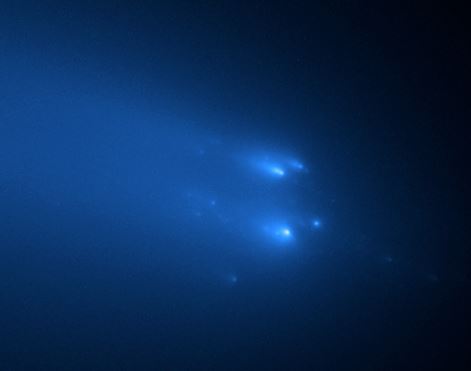
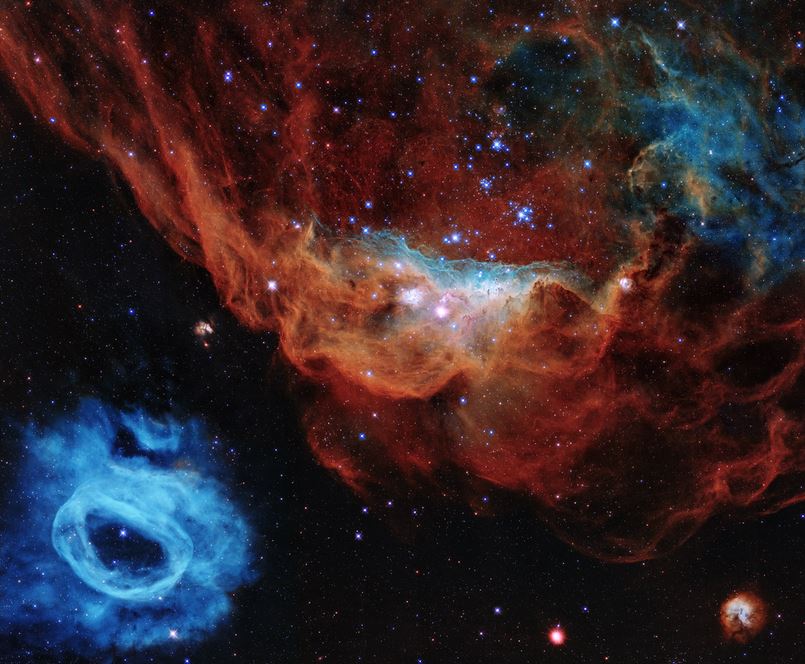
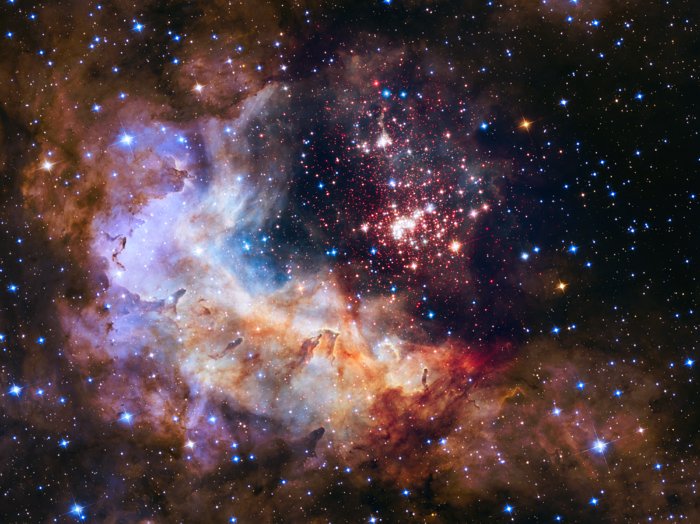
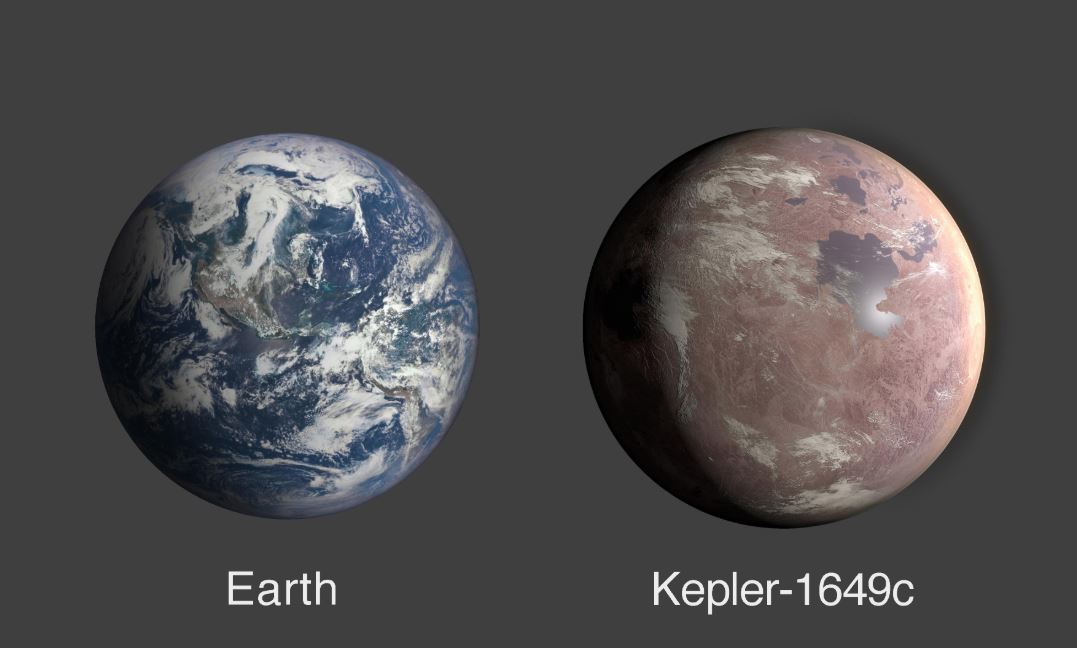

Recent Comments